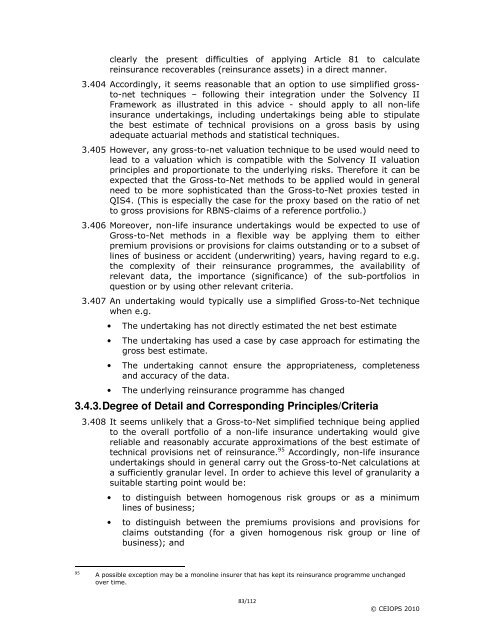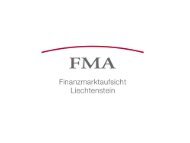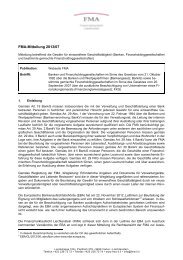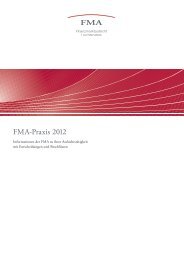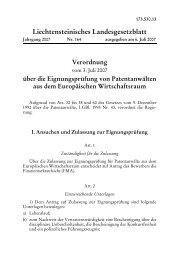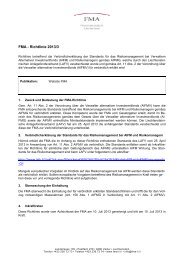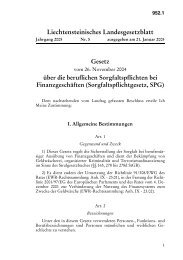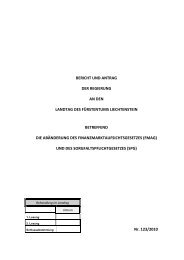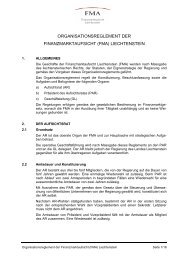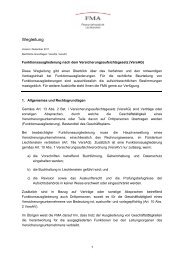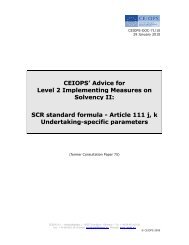CEIOPS' Advice for Level 2 Implementing ... - EIOPA - Europa
CEIOPS' Advice for Level 2 Implementing ... - EIOPA - Europa
CEIOPS' Advice for Level 2 Implementing ... - EIOPA - Europa
You also want an ePaper? Increase the reach of your titles
YUMPU automatically turns print PDFs into web optimized ePapers that Google loves.
clearly the present difficulties of applying Article 81 to calculate<br />
reinsurance recoverables (reinsurance assets) in a direct manner.<br />
3.404 Accordingly, it seems reasonable that an option to use simplified grossto-net<br />
techniques – following their integration under the Solvency II<br />
Framework as illustrated in this advice - should apply to all non-life<br />
insurance undertakings, including undertakings being able to stipulate<br />
the best estimate of technical provisions on a gross basis by using<br />
adequate actuarial methods and statistical techniques.<br />
3.405 However, any gross-to-net valuation technique to be used would need to<br />
lead to a valuation which is compatible with the Solvency II valuation<br />
principles and proportionate to the underlying risks. There<strong>for</strong>e it can be<br />
expected that the Gross-to-Net methods to be applied would in general<br />
need to be more sophisticated than the Gross-to-Net proxies tested in<br />
QIS4. (This is especially the case <strong>for</strong> the proxy based on the ratio of net<br />
to gross provisions <strong>for</strong> RBNS-claims of a reference portfolio.)<br />
3.406 Moreover, non-life insurance undertakings would be expected to use of<br />
Gross-to-Net methods in a flexible way be applying them to either<br />
premium provisions or provisions <strong>for</strong> claims outstanding or to a subset of<br />
lines of business or accident (underwriting) years, having regard to e.g.<br />
the complexity of their reinsurance programmes, the availability of<br />
relevant data, the importance (significance) of the sub-portfolios in<br />
question or by using other relevant criteria.<br />
3.407 An undertaking would typically use a simplified Gross-to-Net technique<br />
when e.g.<br />
• The undertaking has not directly estimated the net best estimate<br />
• The undertaking has used a case by case approach <strong>for</strong> estimating the<br />
gross best estimate.<br />
• The undertaking cannot ensure the appropriateness, completeness<br />
and accuracy of the data.<br />
• The underlying reinsurance programme has changed<br />
3.4.3. Degree of Detail and Corresponding Principles/Criteria<br />
3.408 It seems unlikely that a Gross-to-Net simplified technique being applied<br />
to the overall portfolio of a non-life insurance undertaking would give<br />
reliable and reasonably accurate approximations of the best estimate of<br />
technical provisions net of reinsurance. 95 Accordingly, non-life insurance<br />
undertakings should in general carry out the Gross-to-Net calculations at<br />
a sufficiently granular level. In order to achieve this level of granularity a<br />
suitable starting point would be:<br />
• to distinguish between homogenous risk groups or as a minimum<br />
lines of business;<br />
• to distinguish between the premiums provisions and provisions <strong>for</strong><br />
claims outstanding (<strong>for</strong> a given homogenous risk group or line of<br />
business); and<br />
95 A possible exception may be a monoline insurer that has kept its reinsurance programme unchanged<br />
over time.<br />
83/112<br />
© CEIOPS 2010


